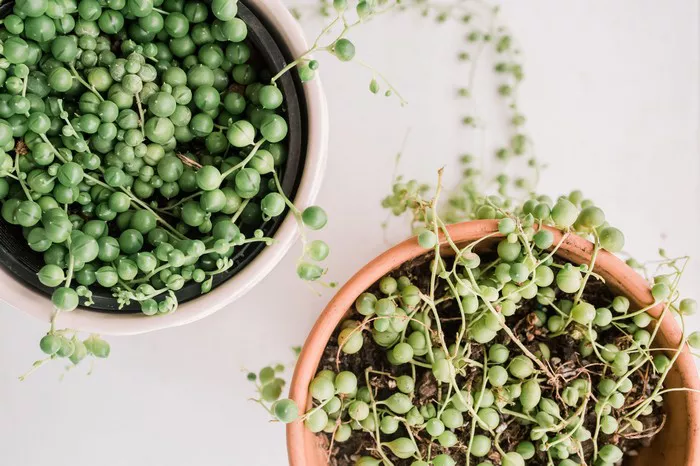Succulents have surged in popularity in recent years, captivating enthusiasts with their unique forms and low-maintenance requirements. Among the diverse array of succulents, the pearl succulent stands out for its distinctive appearance and delicate charm. With its clusters of bead-like leaves and subtle pastel hues, the pearl succulent, scientifically known as Senecio rowleyanus, adds an elegant touch to any indoor or outdoor space. However, like all living organisms, pearl succulents require proper care to thrive and flourish. In this comprehensive guide, we will delve into the essential aspects of pearl succulent care, from optimal growing conditions to common challenges and solutions.
Understanding the Pearl Succulent
Before delving into care instructions, it is important to gain a basic understanding of the pearl succulent’s characteristics and habitat. Native to South Africa, Senecio rowleyanus belongs to the Asteraceae family and is commonly known as string-of-pearls or bead plant. Its distinctive appearance is characterized by trailing stems adorned with spherical, bead-like leaves. These leaves store water, enabling the plant to survive in arid environments.
Optimal Growing Conditions
Creating an environment that mimics the pearl succulent’s natural habitat is key to promoting its health and vigor. Here are the optimal growing conditions for cultivating pearl succulents:
1. Sunlight: Pearl succulents thrive in bright, indirect sunlight. Place them near a south or west-facing window where they can receive ample sunlight without being exposed to harsh midday rays.
2. Temperature: Maintain a moderate temperature range of 65°F to 80°F (18°C to 27°C) during the day and slightly cooler temperatures at night. Protect the plant from extreme fluctuations in temperature, as sudden changes can stress the succulent.
3. Soil: Use a well-draining, sandy potting mix specifically formulated for succulents and cacti. Avoid heavy, moisture-retentive soils that can lead to root rot.
4. Watering: Water the pearl succulent sparingly, allowing the soil to dry out between waterings. Overwatering is a common mistake that can cause root rot and other moisture-related issues. Stick to a weekly or bi-weekly watering schedule, adjusting as needed based on environmental conditions.
5. Humidity: Pearl succulents prefer low to moderate humidity levels. Avoid placing them in overly humid environments, such as bathrooms, as this can increase the risk of fungal diseases.
6. Potting: Choose a shallow, wide pot with adequate drainage holes to prevent waterlogging. Repot the succulent every 1-2 years to refresh the soil and provide ample space for growth.
Care and Maintenance
Regular maintenance is essential for keeping pearl succulents healthy and vibrant. Follow these care tips to ensure optimal growth and longevity:
1. Pruning: Trim back leggy or overgrown stems to promote bushier growth and maintain the plant’s shape. Use clean, sharp scissors or pruning shears to make precise cuts, taking care to avoid damaging healthy tissue.
2. Fertilization: Feed pearl succulents with a balanced, water-soluble fertilizer diluted to half-strength during the growing season (spring and summer). Apply fertilizer sparingly, as over-fertilization can lead to salt buildup in the soil.
3. Pest Control: Keep an eye out for common succulent pests such as mealybugs, aphids, and spider mites. If infestations occur, treat the affected plants promptly with insecticidal soap or neem oil, ensuring thorough coverage of both the tops and undersides of leaves.
4. Propagation: Pearl succulents can be easily propagated from stem cuttings. Simply snip off a healthy stem segment and allow it to callus for a few days before planting it in a well-draining potting mix. Keep the soil lightly moist until roots develop, then gradually transition to a regular watering schedule.
Common Challenges and Solutions
Even with proper care, pearl succulents may encounter challenges that require attention. Here are some common issues and their respective solutions:
1. Root Rot: Overwatering is the primary cause of root rot in pearl succulents. If you suspect root rot, carefully remove the plant from its pot and inspect the roots. Trim away any mushy or discolored roots, repotting the succulent in fresh soil if necessary. Adjust your watering habits to prevent future occurrences.
2. Sunburn: Excessive exposure to direct sunlight can cause sunburn, resulting in scorched or discolored leaves. Move the affected plant to a shadier location and gradually reintroduce it to sunlight to prevent further damage.
3. Leggy Growth: Insufficient light or overcrowding can cause pearl succulents to become leggy, with elongated stems and sparse foliage. Provide adequate sunlight and space for the plant to spread out, pruning back leggy growth as needed to encourage compact, bushy growth.
4. Yellowing Leaves: Yellowing leaves are often a sign of overwatering or nutrient deficiencies. Allow the soil to dry out completely between waterings and consider fertilizing the plant with a balanced fertilizer to address nutrient deficiencies.
Conclusion
Caring for pearl succulents can be a rewarding and fulfilling experience, allowing you to cultivate living works of art in your home or garden. By providing optimal growing conditions, practicing regular maintenance, and addressing common challenges promptly, you can ensure that your pearl succulents thrive and flourish for years to come. With a little care and attention, these exquisite plants will continue to enchant and delight with their timeless beauty.


